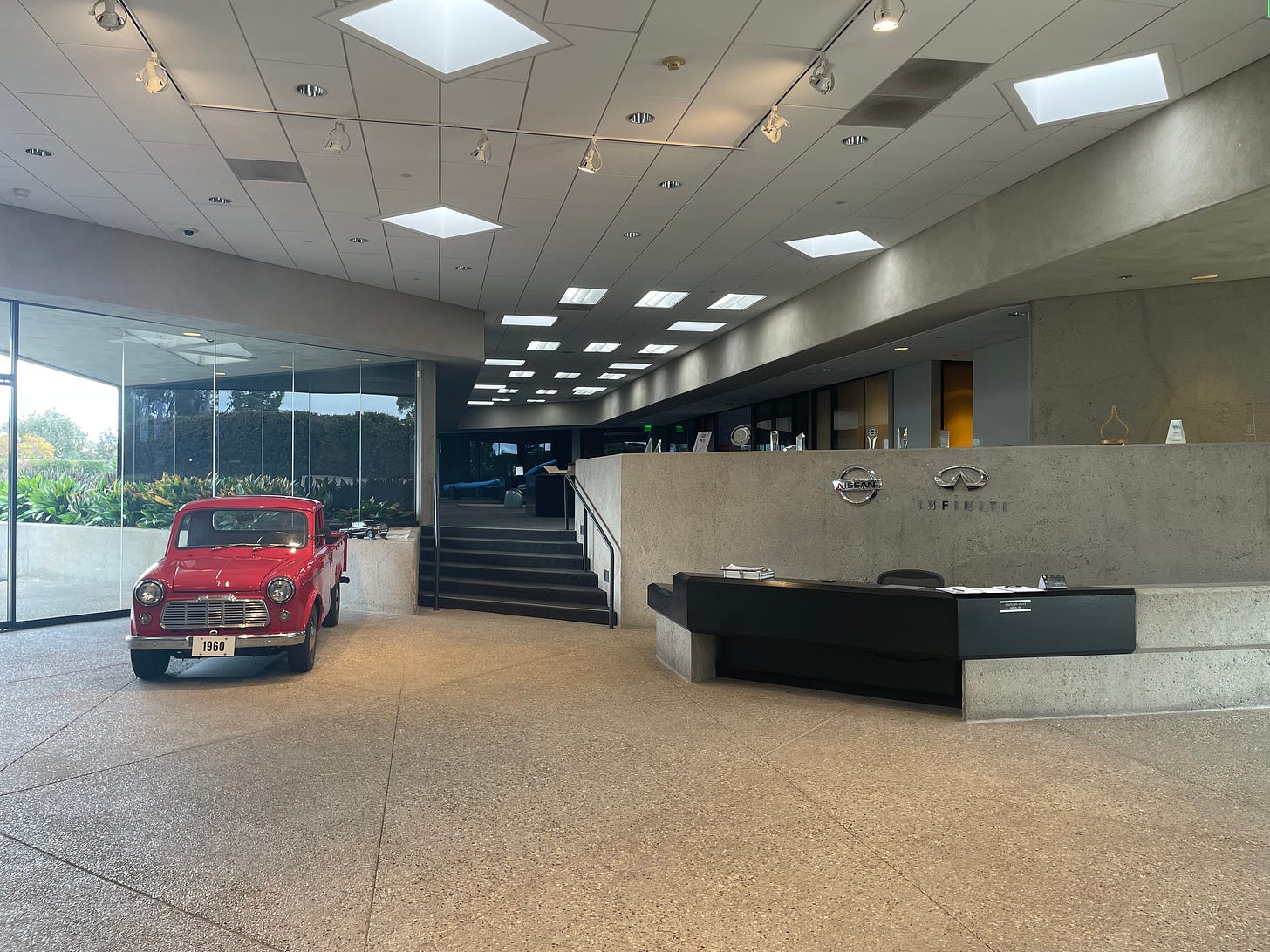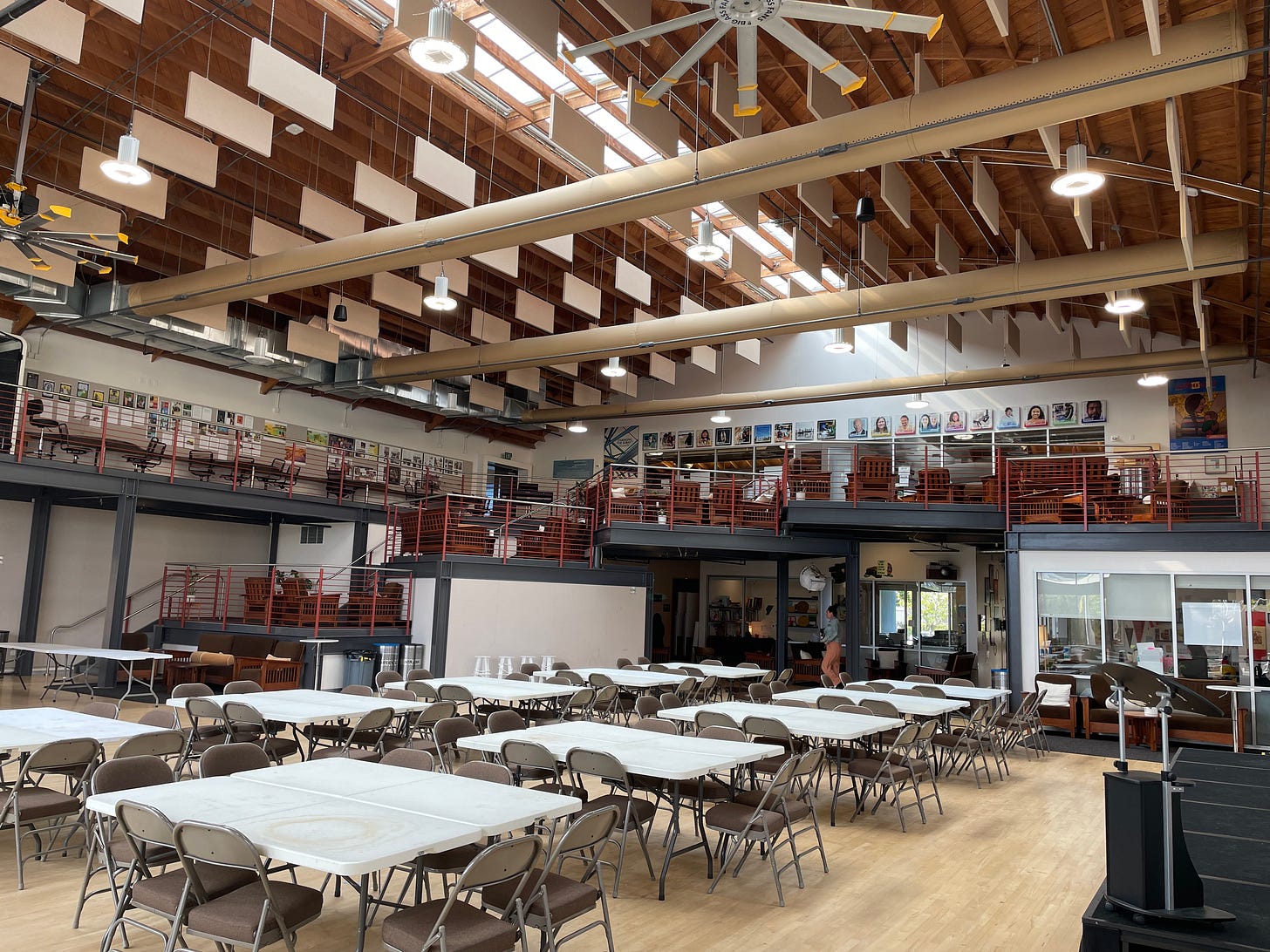When to "Go Broad" and when to "Go Narrow"
When you know what you're asking for, you just might find it.
👋 Hi there! Thanks for reading Learning, Designed. Welcome to the 10 new subscribers who joined our community in the last week. I’ve enjoyed connecting with lots of you through 1-1 emails, look out for a note from me soon if you haven’t received one already.
I’m writing because education wasn't designed around students, but we can improve the learner experience through design. I share stories, tips, and work in progress weekly.
Why it matters:
With 9 days until the Global Service Jam, I’m grateful to share that we finally locked in a venue! When several promising conversations with community partners halted because of space renovations, we contacted over 20 venues but ran into barriers like lack of availability, space rental costs, and spaces that were willing to host but didn’t meet criteria for an ideal attendee experience. The 2Xth venue we contacted came from being extremely clear about our objectives, and our ask, and it worked.
Go deeper:
Each year design thinking enthusiasts in 100+ cities worldwide participate in a weekend of using service design tools to solve community problems as part of the Global Service Jam.
San Diego Service Jam is a weekend-long, volunteer-run, budget-neutral service design event using design thinking tools like user research, brainstorming, and rapid prototyping & testing. February 21-23, we will host the second Service Jam in SD!
Setting the stage
After founding Service Jam in SD in 2019, we started assessing interest in another Service Jam back in November of 2024 as we reconnected to the design community through World Design Capital events. There was lots of enthusiasm, largely because the event builds an engaged and energetic community. Before we moved to SD we planned several Jams in Washington, DC and “Jammers” always found each other at design networking events. Solving problems and learning brings people together.
Aligning efforts with the local design community
We teamed up with the UX Speakeasy 501c3 this year as the Jam “pops out of the ground” between January-March and doesn’t require much organizational infrastructure. A design community nonprofit partnership allows tax deductible donations from local design companies and organizations supporting our mission and connects us directly to local designers. Importantly, since the Global event is explicitly not for profit, our missions align.
This year we partnered with SD Design Trek, an organization serving early career designers through career exposure and mentorship. Our goal was to present opportunities for year-round support of the design community through a combined sponsorship ask, rather than several small ones throughout the year.
One of the great honors of planning the Jam is that we are able to create a platform to showcase the work of great designers in the community. We recruit a team of volunteer coaches and speakers to build the program along with a small operational team to bring the event to life. In doing so, we’ve become catalysts and have the opportunity to collaborate with amazing leaders.
This year, Michèle Morris, Scott Robinson, Ali Hussain, Chris Gielow, Syp Vandy Siligato, and Jordi Morillo (among many others) have been central to our success: wayfinding and coordinating outreach to make the event happen, and exploring options for every part of the program to design a great experience for attendees. Through these networks we reached out to dozens of leaders and orgs for sponsorship, coaching, speaking, or other support.
Asking the community for help
But looking back on the last few weeks of scrambling to find a venue, I learned a valuable lesson about community-driven work. When our original venue fell through, we were able to quickly identify many possibilities because we activated our network through dozens of emails, Linkedin messages, Zoom calls, and texts. We answered every call, chased every lead, and armed dozens of people with language to expand our reach and make connections.
We wrote the criteria below to describe what we needed a venue to do rather than being specific about what we were looking for (more on this later).
A great Jam site:
can accommodate 50-75 people seated
in a walkable area with foot traffic (for user research and testing)
Nice to have would include additional rooms that would allow "jam teams" to work together (this is flexible in set up but includes tables or workspace)
Ideally has parking available or public transportation
Due to the budget neutral event, we appreciate space that is available through an in-kind donation or company sponsoring their office space.
Looking back now, we learned a few important lessons about when to go broad and when to go narrow.

A lesson in going broad and crappy criteria
First, that the SD design community is extremely thoughtful and generous to make connections and share ideas. They referred us to venues they’d heard of or been to in the past, restaurants with great ambiance, and potential office spaces. We even learned of an impressive downtown penthouse one of our colleagues owns and hosts events in often! We heard lots of names more than once.
Because we were working on short notice and supporting a budget-neutral event, a combination of a lack of availability and cost eliminated most options. And when we finally had a “yes,” we found ourselves staring down our most important criteria: walkability.

That’s because the Jam is heavily community-oriented. While attendees learn service design, they are actively doing it, live, in the community. The ideal venue lets them step out the front door and start user research on Saturday morning, and prototyping and testing on Sunday. But we didn’t emphasize the importance in our outreach or criteria. Sure, it’s mentioned, but it lacks emphasis in our criteria. We ultimately took the approach of “Going Broad,” exploring many possible options for solutions. We generated a list like we were exploring options when we should have been narrowing down to specific locations.
This was a mistake, but it wasn’t clear to us until later.
Taking a break, and inspiration strikes
Overwhelmed by our lack of viable options and wondering if we would have to cancel the Jam, we decided to take the afternoon off and visit Liberty Station, a former Naval Training Facility near downtown San Diego turned into shops, art galleries, food market and social nexus.
As we grabbed food and walked, we realized we had stumbled on our solution— there were offices all around us, lots of parking, and people everywhere. The perfect backdrop for a Jam. Right under our nose. Completely by accident.
As we drove out of Liberty Station, we remembered there was a school nearby. We drove by High Tech High- a staple in San Diego, known nationally for its approach to project-based education in community. It was perfect. Empty on the weekends, lots of space, already set up for learning and doing.
Finally, resolution: By going narrow
I thought about whether I might know anyone who was connected to the school. I did, and a few minutes later I had an email and a text message drafted and an introduction to school leadership in motion. Later that week, we locked in a venue.

The lesson? We went narrow. We got hyper specific about where we wanted to host and who we needed to talk to. Our network was obviously critical, but rather than reach out to dozens of event venues that were broad referrals, we connected to the mission-aligned "needle in a haystack" in the walkable community that would bring our event to life exactly as we hoped.
Imagine if we had started ideation focused on communities in San Diego and reached out to our network to ask if anyone had connections there? The criteria would have helped, but getting hyper specific about our needs might have yielded stronger matches.
Iteration is always a good thing, and there’s always something to learn. Ultimately we got where we needed to be. There’s an important lesson from this story: consider the goal behind your efforts. Do you want many possibilities, or do you want help connecting to something specific?
I hope our experience can offer you some insight the next time you’re looking for help or shaping an idea. Reach out if you’re not sure which “mode” you should be in for the project you’re working on!
And if you’re in San Diego, come Jam with us later this month!
Insights from the Field
Bringing you voices from across education to answer:
What advice would you give to someone driving change in education?
“Embrace curiosity over certainty. When launching a significant change, it's tempting to try to perfect the plan and predict every possible outcome. While it's important to ensure your proposal is sound and won't cause students harm, spending too much time perfecting the plan can delay the launch unnecessarily with diminishing impact to student outcomes. Instead, focus on hitting a "good enough" standard, then launch the change and create rapid feedback loops to quickly adapt based on learnings. You'll never fully anticipate all consequences, so it's crucial to get started and set yourself up for quick iterations.
Build dynamic, adaptable systems rather than static ones. Ultimately, a system of continuous learning will lead to the strongest student outcomes.”
Strategy & Research at Merit America
Sharing this with a colleague is the most meaningful way to show it made an impact.
Please click the ❤️ button on this post so more people can discover it on Substack. Tell me what you think in the comments!






